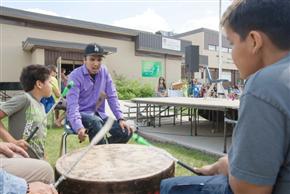Language Revitalization Using Technology
The final weblog I posted last week was about the first graduates from Nawahi, the Hawaiian Immersion University. I was inspired by the news article as many of the first graduates continued finding careers using their own Native language after University.
Language preservation is a vital component to keeping Indigenous cultures alive as language itself holds different meanings, metaphors and values that cannot be expressed once it’s gone. According to Cultural Survival “More than 70 could fall silent in the next 5 years unless immediate action is taken to teach them to younger generations of tribal citizens.” I would like to focus on how technology can improve and empower Indigenous cultures through language revitalization.
Language revitalization seemed to be a resonating theme in many weblogs I posted. Native American Public Telecommunications is a site that provides media, film, podcasts, music and radio created by a board of Native Americans about Native North Americans. Cultural Survival is a website for all Indigenous cultures around the world to connect. To help protect indigenous languages from disappearing, there is a radio broadcasting section to share radio spoken in different Indigenous languages around the world. Since most people have access to radio, new generations can enjoy listening to their own language.
The digital divide creates boundaries for Indigenous people who are unable to connect and use technology as an educational tool. According to Cultural Survival “Indigenous Peoples constitute about 5% of the world’s population, yet account for about 15% of the world’s poor.” I would also like to explore the theme “Is technology culturally neutral?” as I carry out my research.
References
Eisenlohr, P. (2004). Revitalization and new technologies: cultures of electronic mediation and the refiguring of communitiees. Annual Review of Anthropology, 33 (21), p. 21- 45.
Hermes, M. (2012). Designing indigenous language revitalization. Harvard Educational Review, 82 (3), p. 381- 402.
Hermes, M. (2013). Ojibwe language revitalization, multimedia technology, and family language learning. Language Learning and Technology, 17 (1), p. 125 – 144.
Hinton, L. (2003). Language revitalization. Annual Review of Applied Linguistics, 23, p. 44- 57. Doi: 10.1017/S0267190503000187
Warschauer, M. (1998). Technology and indigenous language revitalization: analyzing the experience of hawai’i. Canadian Modern Language Review, 55 (1), p. 139 – 159.
http://www.culturalsurvival.org/
http://www.fpcc.ca/language/toolkit/Language_Revitalization_Strategies.aspx
http://www.nativetelecom.org/
http://www.swarthmore.edu/SocSci/langhotspots/revitalization.html
http://travel.nationalgeographic.com/travel/enduring-voices/revitalization/

